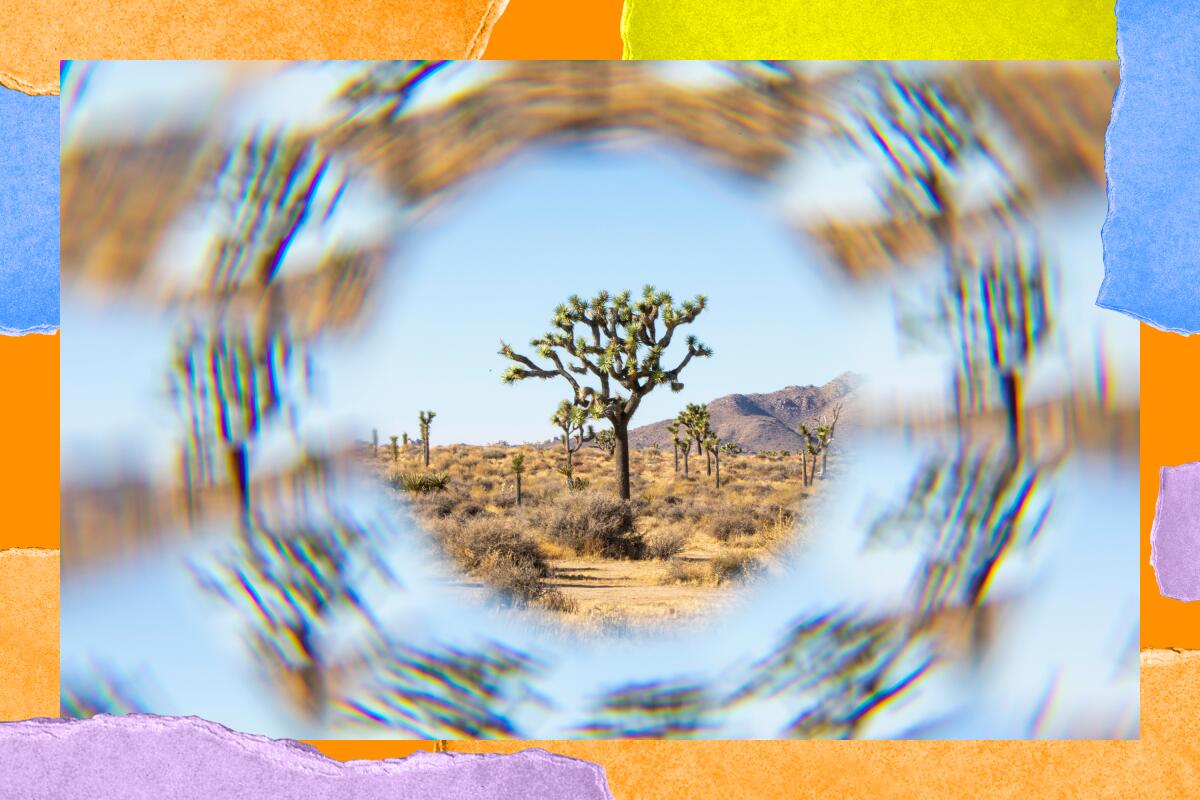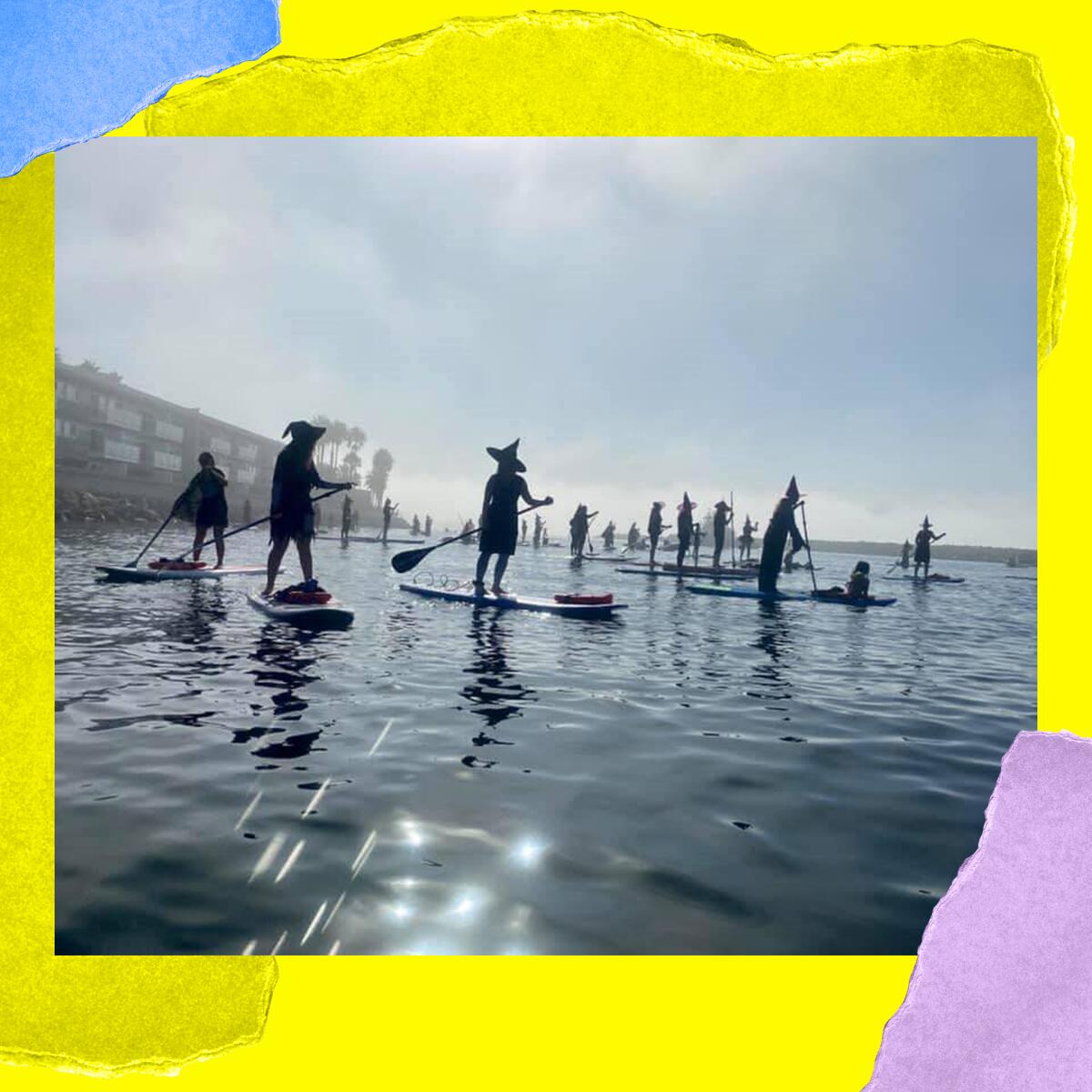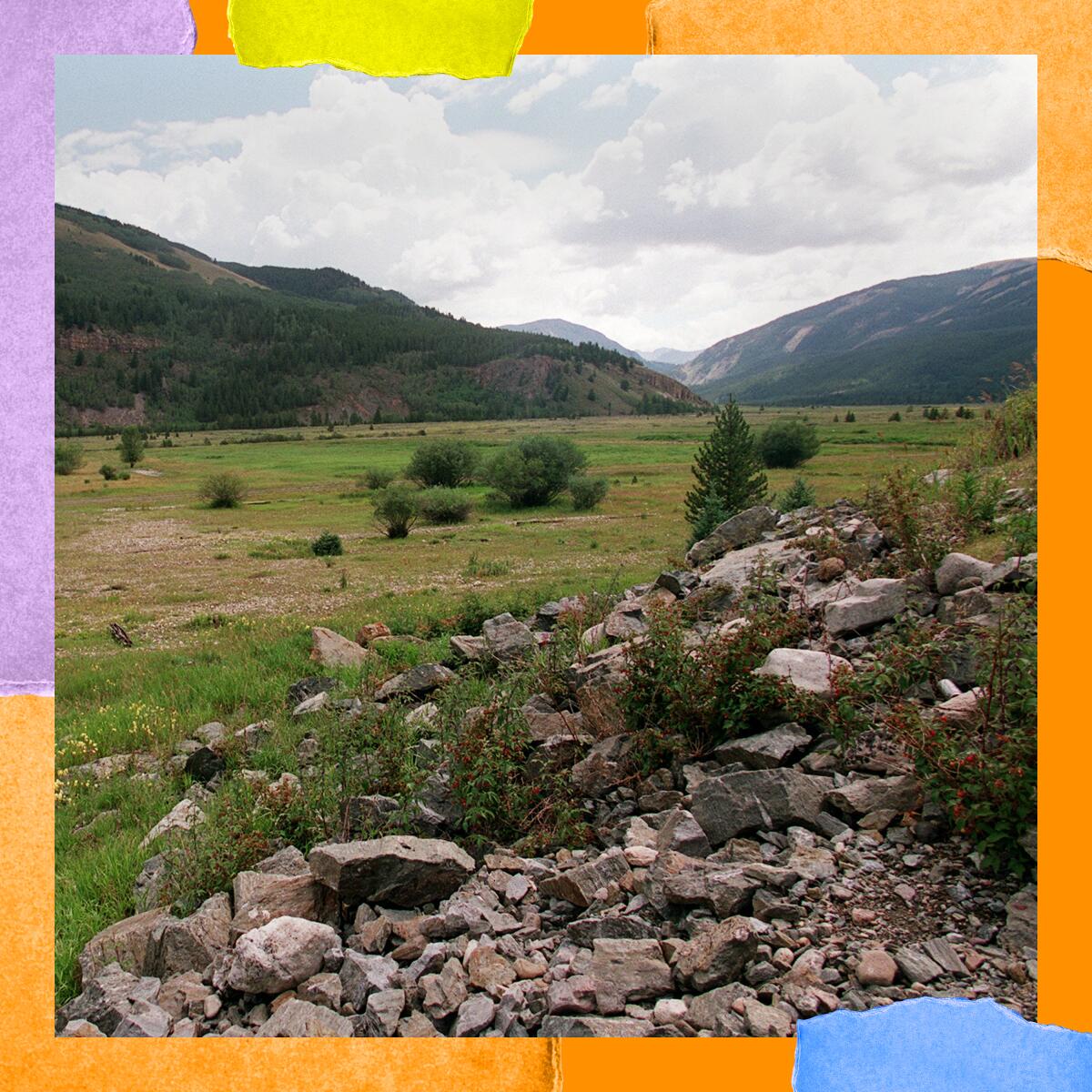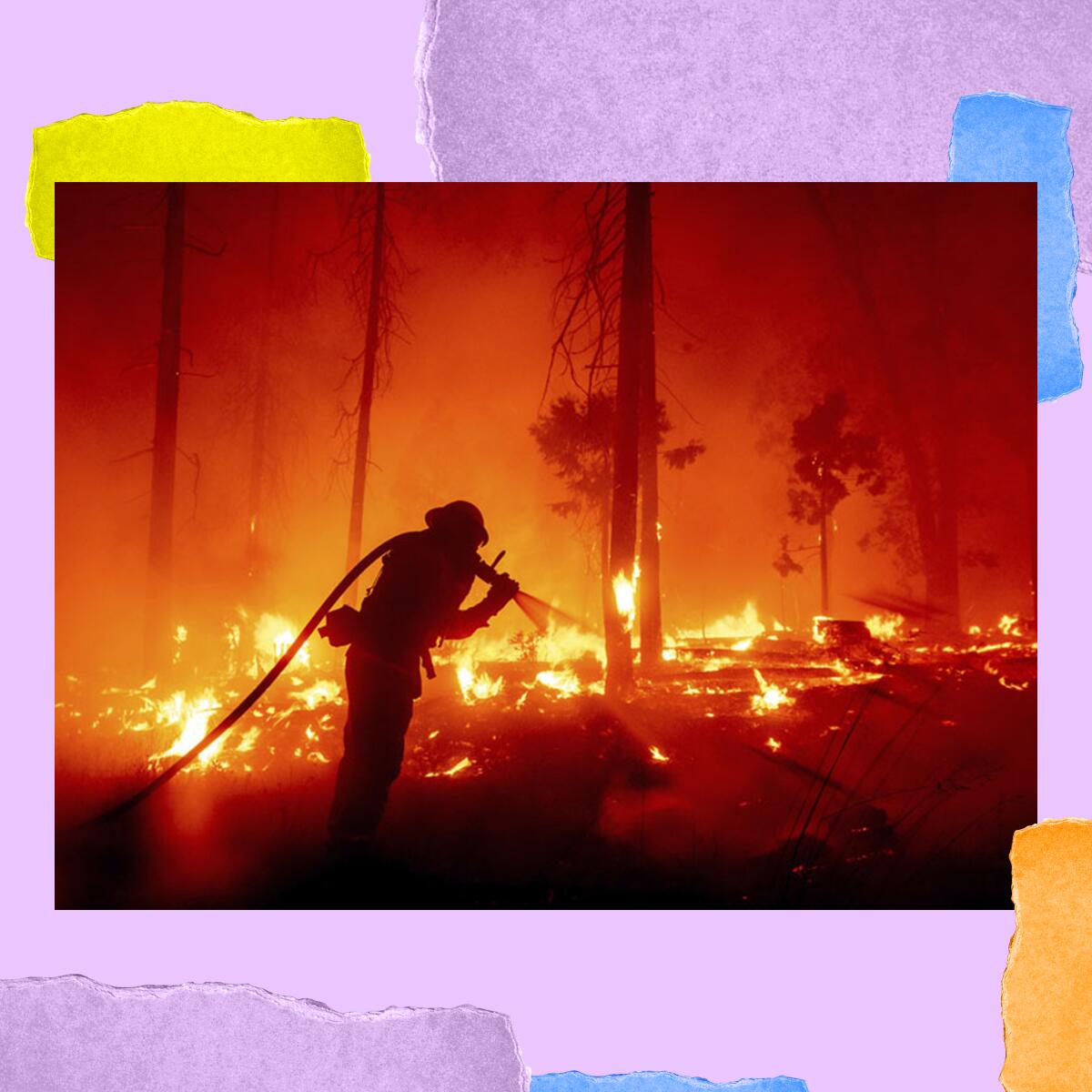Joshua Tree National Park without Joshua trees? The fight is on to protect the beloved plant

- Share via
It’s Halloween time, and there are plenty of great things to do to get your ghoulish levels up if that’s your thing. You might take a stroll through a shadowy wonderland or track down spooky food or celebrate the holiday with some adult indulgences.
But how’s this for scary? Joshua Tree National Park without any Joshua trees.
Although the noble saguaro cactus may take the cake for the most globally iconic desert plant in the Southwest, it’s almost impossible for a Southern Californian to imagine a desert landscape without twisty, spiky Yucca brevifola on the horizon.
To help keep this plant part of our desert, a petition to protect it under the California Endangered Species Act was submitted back in 2019, but the California Fish and Game Commission — which decides which of these petitions move on to protection — can’t seem to agree on what to do.
Get The Wild newsletter.
The essential weekly guide to enjoying the outdoors in Southern California. Insider tips on the best of our beaches, trails, parks, deserts, forests and mountains.
You may occasionally receive promotional content from the Los Angeles Times.
If you’ve driven out to the desert recently, you might see that there isn’t exactly a shortage of Joshua trees right now. In addition to protections within the 800,000-acre Joshua Tree National Park, the western Joshua tree’s range extends far out into Palmdale and Lancaster and north along the Eastern Sierra and into Death Valley. But according to advocates of protection, it’s not the current range that’s the issue but future threats. The plant is facing both development pressures in growing desert towns (read about what’s happening in Joshua Tree), along with hotter, drier climates, increased wildfires and invasive plants. A report by Times writer Louis Sahagún notes the plant’s low rate of reproduction means it can only migrate a few hundred yards each generation. At that rate, the Center for Biological Diversity, which filed the petition to protect the Joshua tree, estimates the species could lose 90% of its range by 2100.
It is perhaps this ambiguity that keeps holding up the decisions — if the designation moves forward, the Joshua tree would be the first species to earn protection in the state due to climate change. A decision in June was deadlocked and punted to this month, and now it is deadlocked once again and delayed until February. I’m not sure which is scarier — Joshua trees disappearing from our deserts or the months of political and legal infighting that often prevent us from taking action until it’s too late.
3 things to do

1. Haunt a harbor in Redondo Beach. Although there will be no actual spell-casting (at least that I’m aware of), you can don your witchiest apparel and head to the coast this Saturday for the annual Redondo Beach Witch Paddle. Join Harbor Vibes at the Portofino Hotel and Marina for a festive stand-up-paddleboarding morning with your fellow nautical necromancers. The paddle begins at 10:30 a.m., and supportive non-paddlers can enjoy a beer garden starting at 11 a.m. The paddle is free, but reservations are encouraged (you can also rent a board at a discount if you need one). Pre-purchase snacks and beer garden tickets here.
Check out “The Times” podcast for essential news and more.
These days, waking up to current events can be, well, daunting. If you’re seeking a more balanced news diet, “The Times” podcast is for you. Gustavo Arellano, along with a diverse set of reporters from the award-winning L.A. Times newsroom, delivers the most interesting stories from the Los Angeles Times every Monday, Wednesday and Friday. Listen and subscribe wherever you get your podcasts.

2. Learn about the surprising ecology of the L.A. River. Head down to Hollydale Park in South Gate to learn about the river’s place as a wildlife corridor and its hopefully more naturalized future. The free program, which takes place from 11 a.m. to noon Saturday, is hosted by Nature for All, along with the San Gabriel and Lower Los Angeles Rivers and Mountains Conservancy, the Los Angeles River Ranger Program and the Watershed Conservation Authority. If you have questions, email julio@lanatureforall.org.

3. Get your hands on some native plants. The 2020 Silverado fire damaged the Native Seed Farm at the Irvine Ranch Conservancy. After years of donations and hard work, the farm is back, and finally opened to the public for activities earlier this month. The organization has several dates available for volunteer help over the next few weeks, with openings Friday and Saturday from 8:30 to 10:30 a.m. Harvest seeds, work in the native plant demonstration garden, tend to young seedlings, and learn all about our beautiful native flora along the way. Minimum age is 8 years old. Sign up to volunteer and put future events in your calendar here.
The must read

How national monuments are designated can be confusing for those not versed in the legislative process, but the U.S. president’s ability to declare new national monument units has always been one of our country’s most interesting preservation quirks. That power, granted in the 1906 Antiquities Act, was meant to protect archaeological sites from looters, but it’s become more of a way for landscapes to get their foot in the doorway to eventually becoming a national park. Arches, Death Valley, Joshua Tree and Grand Canyon national parks all got their start as decreed monuments. Earlier this month, President Biden decreed the Camp Hale – Continental Divide National Monument in Colorado, preserving both an exquisite landscape and some exceptional American history. Lt. Col. ML Cavanaugh penned a beautiful primer on the new monument in The Times. “This special place will provide hope, not just to America and Americans, but to those now defending their homes in Ukraine and elsewhere,” he wrote. “It stands for the good that can be found on the other side of fire and ruin.”
The red flag

Californians have been working hard to reduce our emissions of CO2, passing ambitious statewide limits on greenhouse gas emissions and even proposals to reach carbon neutrality by 2045. Although there are some critiques of these plans — carbon markets, offsets and capture technologies have not really proved to be terribly effective so far — we’re running into a new road bump: forest fires. A new report found that in 2020 alone, the more than 4 million acres that burned released nearly twice the amount of greenhouse gases that the state had cut in the previous 18 years. Wildfire smoke has also erased much of the progress in the air quality of Western states since the passage of the Clean Air Act, too. It’s a wakeup call for cities and states to take this already serious problem much more seriously — so maybe we can finally do a full and complete ban on fireworks already?
Cool stuff

You may very well already be a fan of The Times’ PLANT PPL, a series that spotlights people of color in the plant world. For the series, The Times’ Lisa Boone recently talked to the Horticult co-founder and author Chantal Aida Gordon, who mentioned an upcoming secret project. Well, that project is out now and it’s a new line of limited-run T-shirts that treat plants like vintage rock and hip-hop artists. If you’re the type of person who wears a Toyon T-shirt to a big meeting (definitely something I have done before), you’ll want to keep your eye on this space for upcoming releases.
Featured hike

I mean you’re not going to find a better time to hike the Pumpkin Rock Trail in Norco, right? Paint on the landscape in the outdoors is usually not great, but it’s hard not to smile when you come upon Pumpkin Rock. The L.A. Times Instagram page posted a fun video on it this week, and if you do happen to have conflicting feelings about whether the rock is art or large-scale graffiti, why not join the hiking group We Explore Earth for a spooky costumed evening hike and cleanup on Saturday from 5 to 8 p.m.? RSVP on Eventbrite. Free.
P.S.

I’m realizing this week’s newsletter is pretty heavy on plants, so let’s wrap it up with some more (sorry, that’s what you get when a dude with native plant tattoos is at the keyboard). The New York Times has been reporting on our state’s Great Basin bristlecone pines. Writer Soumya Karlamangla waxed poetic about the not-very-secret but still thankfully hidden oldest living tree on earth, and Jared Farmer wrote a guest essay asking what ancient trees mean to humanity, both in the biological and the cultural-historical sense. If you can get up to the Ancient Bristlecone Pine Forest before winter sets in, I can tell you that walking near these old, wizened trees is a spiritual experience.
Hey, don’t forget — if you have events you’d like to share or to nominate someone for a spotlight right here, shoot me an e-mail!
For more insider tips on Southern California’s beaches, trails and parks, check out past editions of The Wild. And to view this newsletter in your browser, click here.
Sign up for The Wild
We’ll help you find the best places to hike, bike and run, as well as the perfect silent spots for meditation and yoga.
You may occasionally receive promotional content from the Los Angeles Times.




